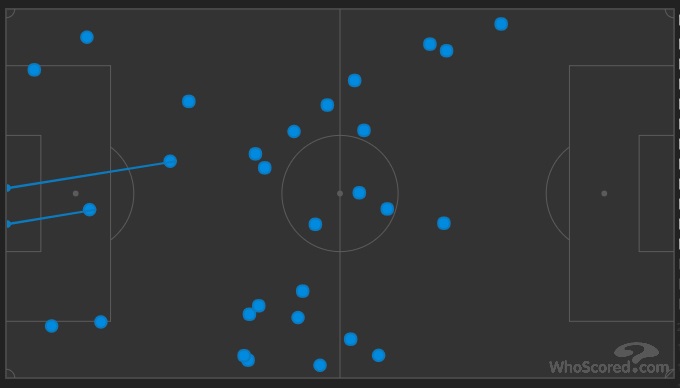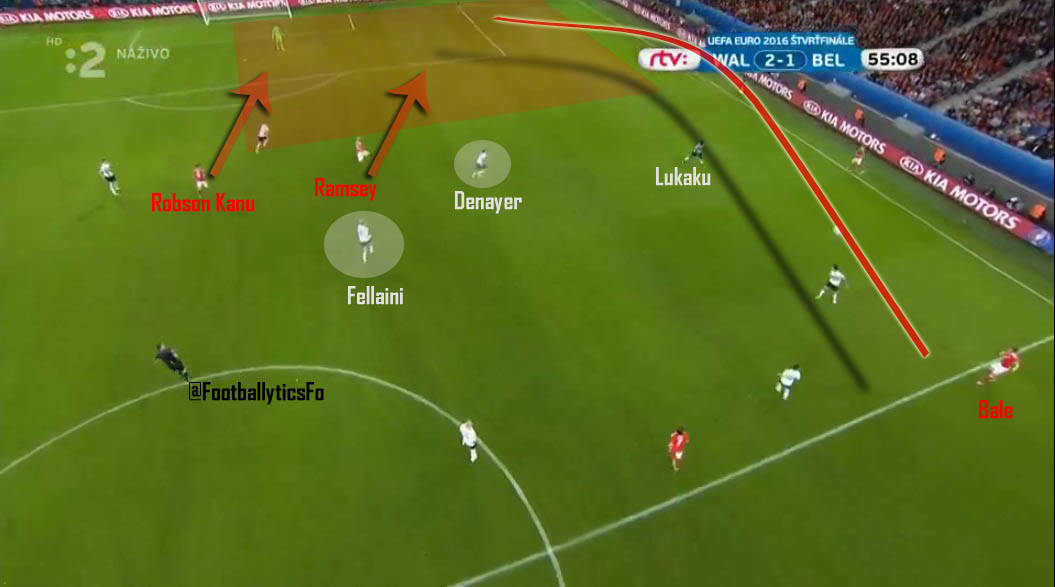This analysis was first published at soccerspecific, a coaching education platform with the mission of creating and sharing the highest quality of coaching information in order to positively impact player development around the world.
The last Madrid Derby at Vincente Calderon stadium didn’t finish only with a surprising result but also provided various tactical surprises. While it is difficult to judge if Zinedine Zidane made the tactical changes to his team due to numerous injuries, it is sure it worked.
Despite the extraordinary form Real has shown this season, they didn’t come to Vincente Calderon as favourites. “Finally, we play against Real as equals” stated Diego Simeone before the match. His confidence added pressure on Atletico which proved too much to handle in the end.
While Simeone had luxury of whole squad, Real Madrid legend Zinedine Zidane was riddled with injuries ahead of the game. Toni Kroos, Alvaro Morata, Casemiro and Pepe weren’t available while Sergio Ramos amd Benzema were still not available for full match.
Zidane didn’t have exactly the best players available before the big game. However, he knew he could go in the match with more patience than Simeone. He used this fact t his advantage and brought out very fluid side that was hard to mark even for great defending outfit as Atletico.
Real tried to keep secure in possession and not being exposed by too advancing full backs. Additionally, Kovačić was seldom playing in an advanced position essentially staying in line with centre backs for even more protection. Crucial for Real game plan was, however, Isco. Playing against such an organized defence Zidane recognized he needs a clever player in midfield who will unbalance the defence with off the ball movement.

Above you see Isco as he drifted deep into right half space to pick up the ball from defence. Due to his good off the ball movement he has time to turn, face the goal, and decide where to distribute the ball.
While Isco was free to move around as he saw fit, Real needed more to break the rival.

Above you see how Real wanted to break Atletico, although, at this instance it was unsuccessful since Juanfran anticipated Bale’s movement. However, you can observe the general idea behind it.
Full backs form a wide line with two centre midfielders to keep Atletico forwards and middle line occupied. Vazquez holds the touchline in very advanced position to keep Luis Felipe engaged. This positioning on the pitch serves to stretch Atletico as far as possible diagonally while opening space in the central area for 4v2 situation. It was on Bale and Isco then to use individual skill and break the middle defensive line of Atletico.
Ideally, Cristiano Ronaldo should have been on the left side to make Juanfran less eager to close down Bale giving him more space to turn. This particular move was broken down by Altetico but visitors still had enough men behind the ball to cover.
Although Atletico has great defensive organization that many teams around the world try to emulate, flexibility from Real was slowly eroding their confidence.
It was difficult to follow what formation was Real playing when in possession since Bale and Isco were constantly moving horizontally trying to unsettle the middle line of Atletico defence. However, this movement and exchange of positions from these two players were the reason why Atletico failed to cope with Real in the end.
Once Real got the lead and was playing with more confidence and even less risk, flexible game plan proved even more successful.
Atletico was struggling to keep the visitors during the first half. While their pressing game up the pitch was largely fruitless, they made series of clever tactical fouls to stop the counter attacks from their rivals.
While first half Real was perhaps a better team, Atletico still had the plan going forward.

Atletico creates overload on left side where Luis Felipe, Carrasco and Fernando Torres drag Carvajal and Varane to the touchline. This creates opening between two centerbacks. Since Kovačić and Isco look the ball carrier Nunez has time and space to get into the box. Unfortunately for Real, although Nunez often cut inside, situations like this were too few and far between.
With the beginning of the second half Atletico seemed more aggressive in their high pressing and reluctant to surrender. However, a mistake from Savić effectively killed the game of. By the time Simeone made changes the game was already gone. Hosts were pushing to get one back but that meant taking more risks against an opponent who already gave them trouble great movement.
In conclusion, it was Zinedine Zidane who absolutely dominated this match up. While Cristiano Ronaldo probably played the best game of the season, the key to great victory was Zidane and his decision to field Bale on the left side alongside Isco. Those two were crucial for unbalancing probably the best defensive team in last five years.
















